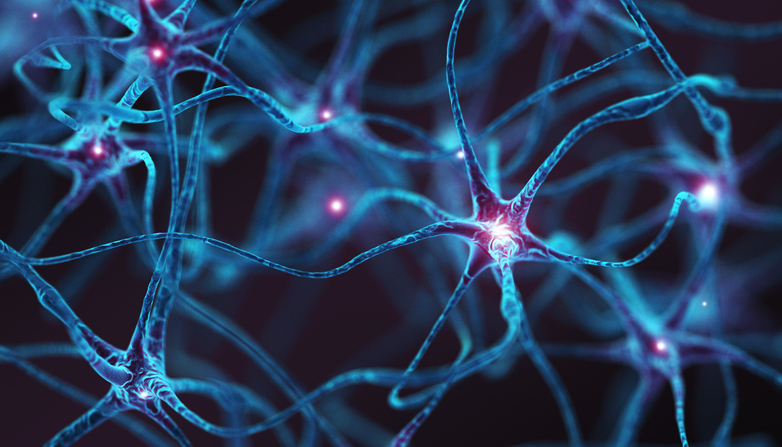![Neurons [BlackJack3D / 1495440392 / E+]](https://www.genengnews.com/wp-content/uploads/2025/05/GettyImages-1495440392.jpg)
Neurons [BlackJack3D / 1495440392 / E+]
The brain’s cerebellum plays a key role in coordinating movement, balance, and cognition. Injury to the cerebellum can have a profound impact on basic motor skills, such as sitting, standing, and walking.
In a new study published in Nature titled, “Gating and noelin clustering of native Ca2+-permeable AMPA receptors,” researchers from Oregon Health and Science University (OHSU) have elucidated the molecular structure of calcium permeable (CP) AMPA-type ionotropic glutamate receptors (AMPARs), key receptors that are integral to fast excitatory synaptic transmission, from the rat brain’s cerebellum. The results support the development of therapies that repair these structures when they are disrupted by injury or genetic mutations.
Eric Gouaux, PhD, senior scientist with the OHSU Vollum Institute and corresponding author of the study, emphasized that synapses are crucial in all aspects of brain function, but how molecular structure controls a functional synapse has not been well understood. Precise receptor positioning is crucial for detecting neurotransmitters released by an adjacent cell.
“We’ve been interested in this question about synapse engineering and molecular insight that may one day help to repair damaged synapses,” said Gouaux. “This is a super exciting new direction with potential therapeutic applications.”
While extensive structural studies have been conducted on recombinant AMPARs and native calcium impermeable (CI)-AMPARs alongside their auxiliary proteins, the molecular architecture of native CP-AMPARs has remained undefined.
AMPARs are tetrameric assemblies composed of GluA1-GluA4 subunits and exhibit a modular architecture comprising three layers: the extracellular amino-terminal domain (ATD), ligand-binding domain (LBD), and transmembrane domain (TMD). The ATD is involved in receptor assembly, subunit interactions, and interactions with synaptic proteins, such as neuronal pentraxin and Noelin, which in turn are implicated in synapse formation and receptor anchoring.
Using cryo-electron microscopy (cryo-EM), the researchers showed a detailed view of CP-AMPAR subunit structural positioning, in which the GluA4 subunit occupies the B and D positions, while transmembrane AMPAR regulatory proteins (TARPs), auxiliary subunits that are critical determinants of AMPAR trafficking, gating, and pharmacology, were located at the B′/D′ positions. Cornichon homologs (CNIHs), another family of AMPAR regulatory proteins, or TARPs, were found in the A′/C′ positions.
The authors also resolved the structure of the Noelin 1-GluA1/A4 complex, and demonstrated that Noelin 1 (Noe 1) specifically binds to the GluA4 subunit at the B and D positions. Notably, they found that Noe 1 stabilizes the amino-terminal domain (ATD) layer without affecting receptor gating properties. Additionally, Noe 1 contributes to AMPAR function by forming dimeric-AMPAR assemblies that likely engage in extracellular networks, clustering receptors within synaptic environments and modulating receptor responsiveness to synaptic inputs.
“We know if there is an injury or genetic mutation in the cerebellum, it can lead to devastating disorders of balance, movement, or cognition,” said co-author Laurence Trussell, PhD, professor of otolaryngology/head and neck surgery in the OHSU School of Medicine. “This kind of glutamate receptor seems to be really important in how the cerebellum works. It’s entirely possible that developing drugs that target these receptors could improve their function.”



